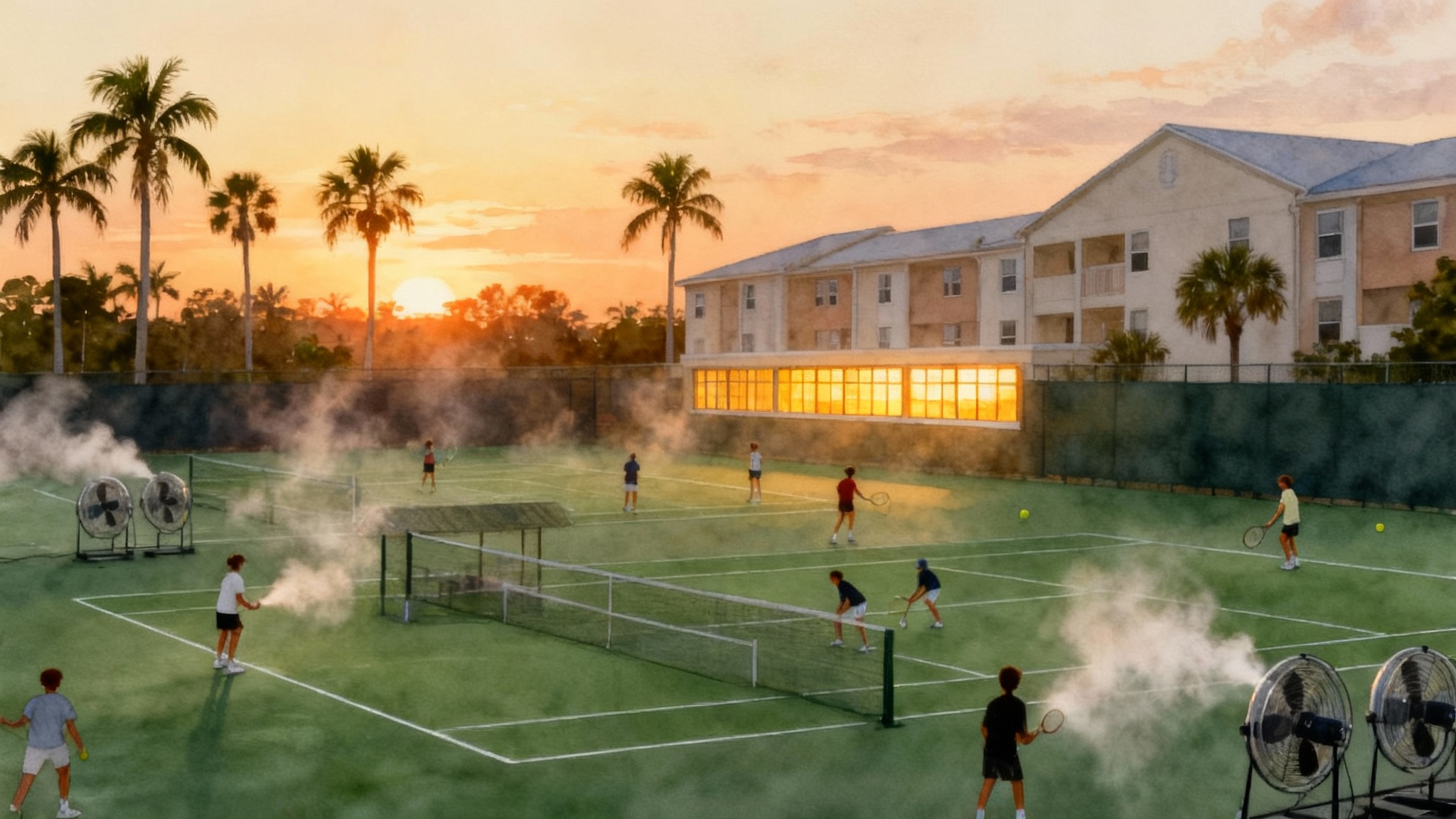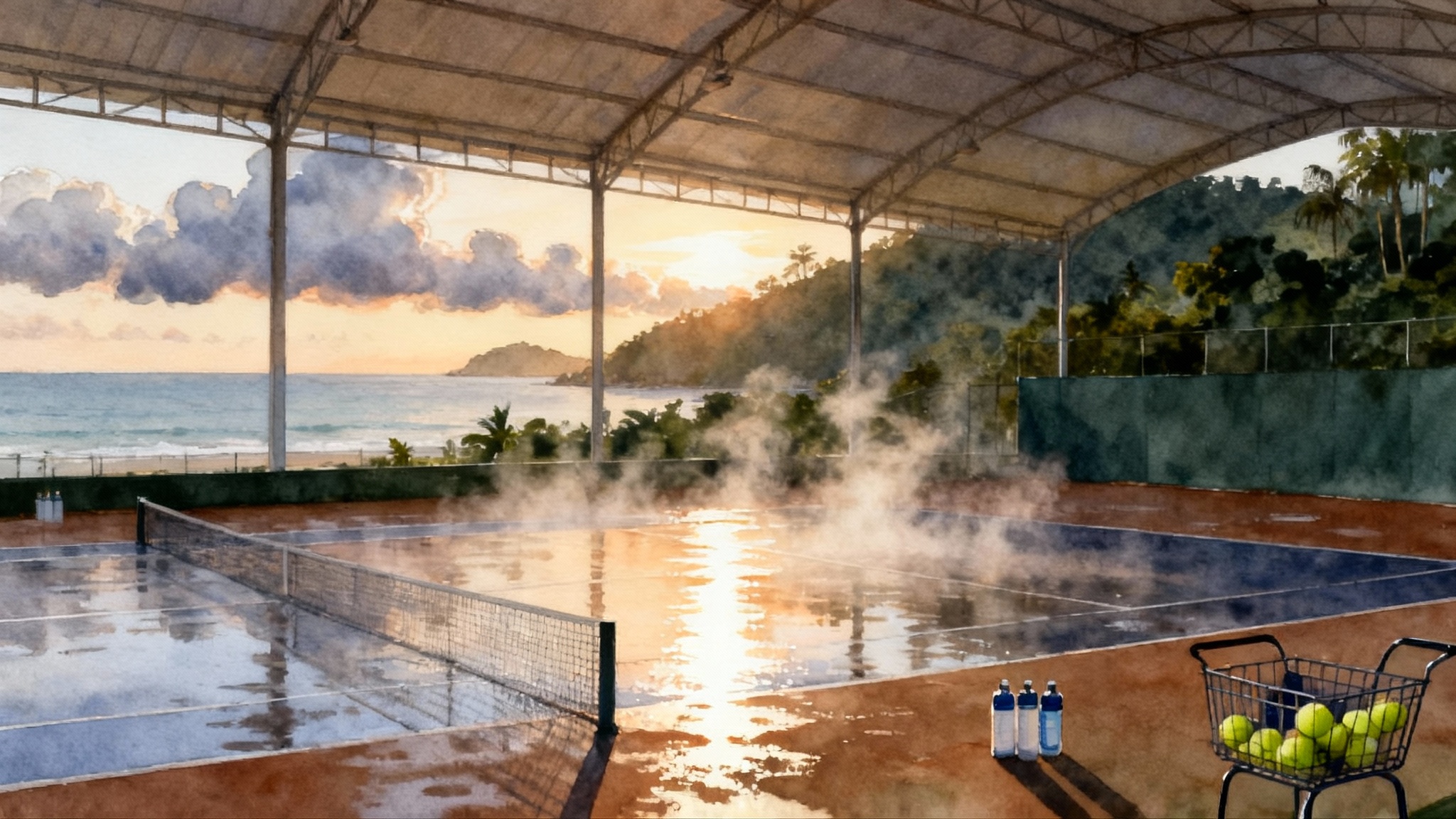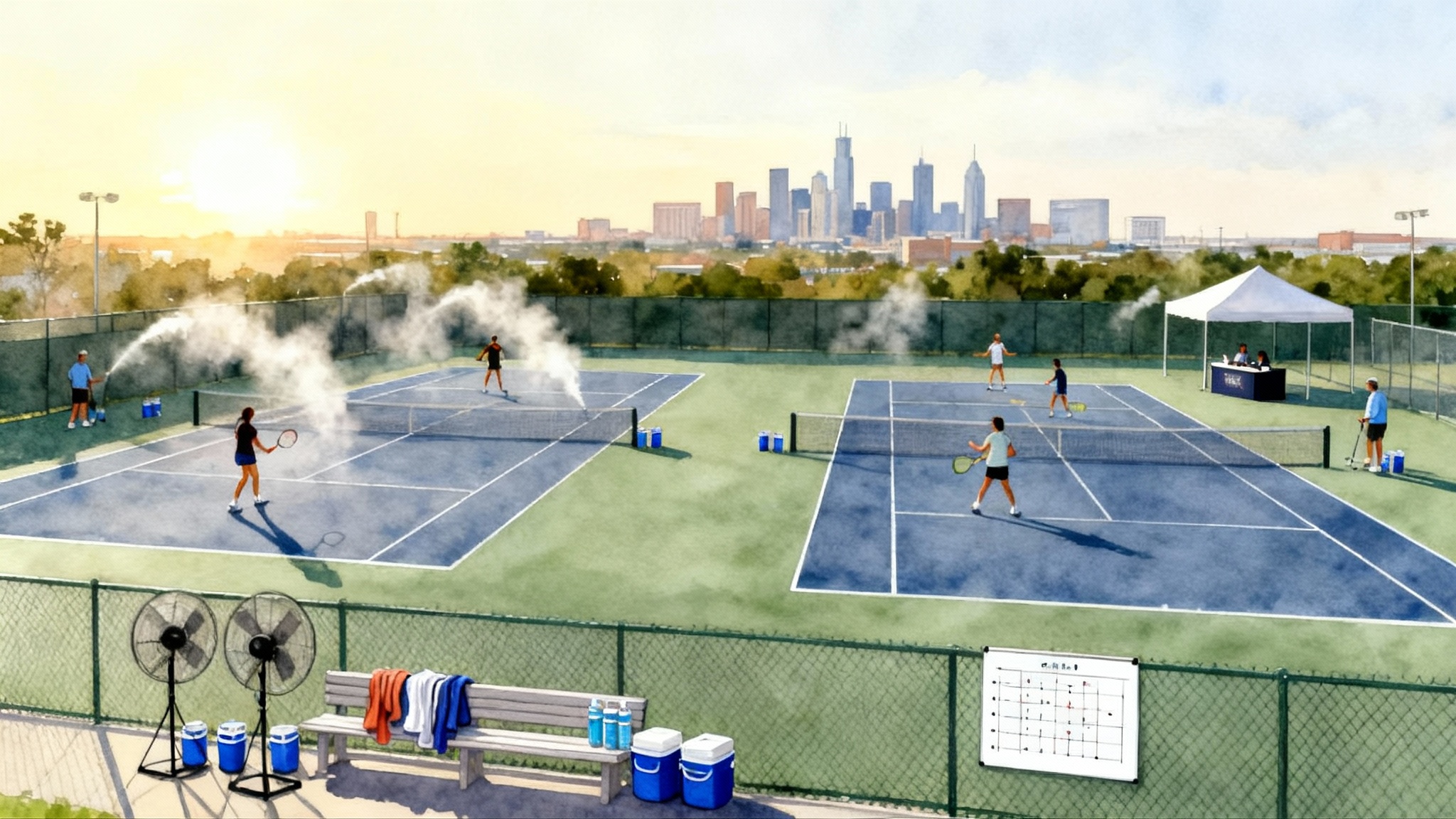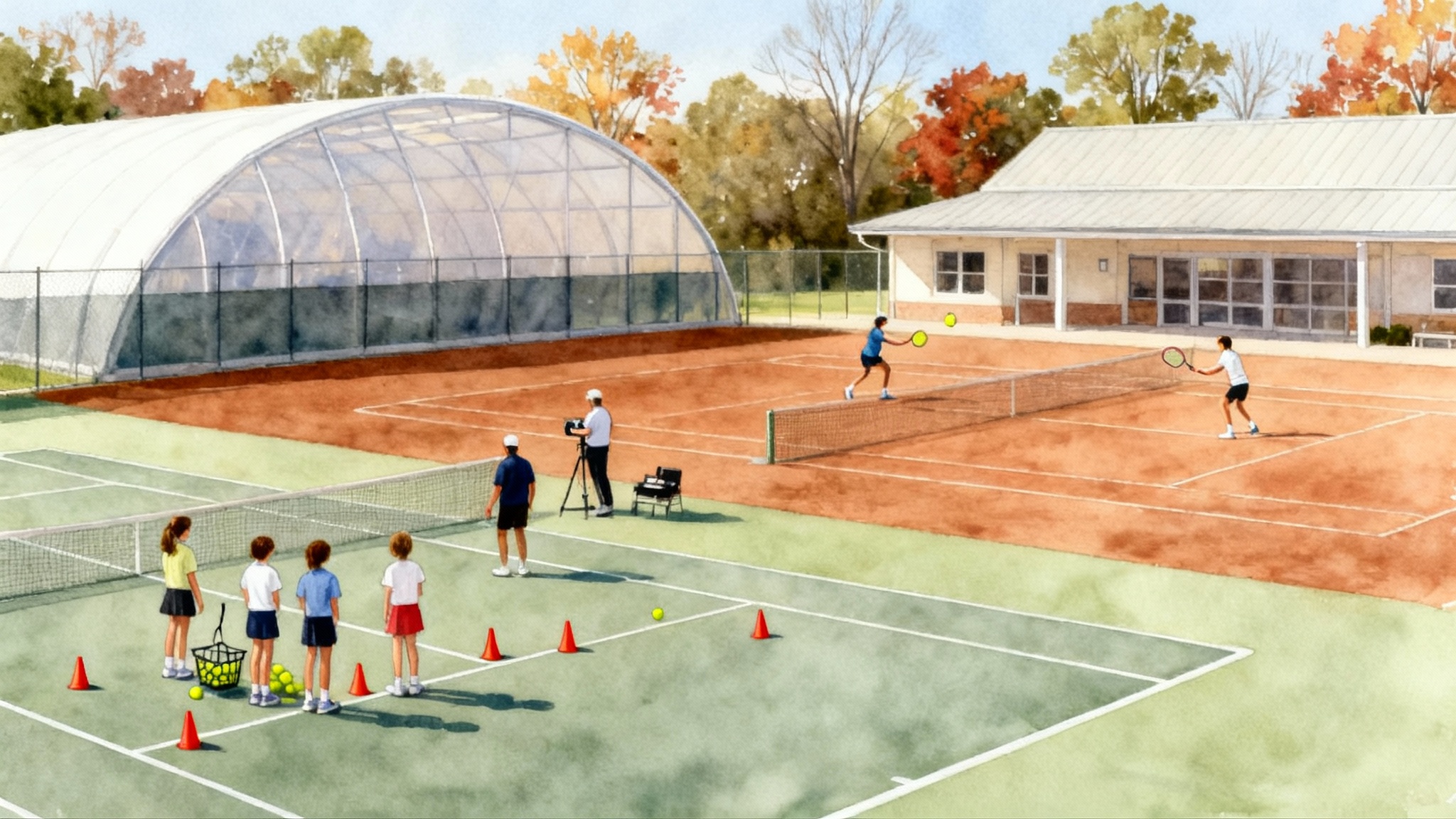Los Angeles vs Orange County Junior Tennis Academies 2025–2026
A parent-focused guide comparing three SoCal day academies for 2025–2026. We break down coaching pedigree, training blocks, court access, match-play volume, pricing clarity, college-pathway support, and daily logistics, plus decision checklists and sample weeks.
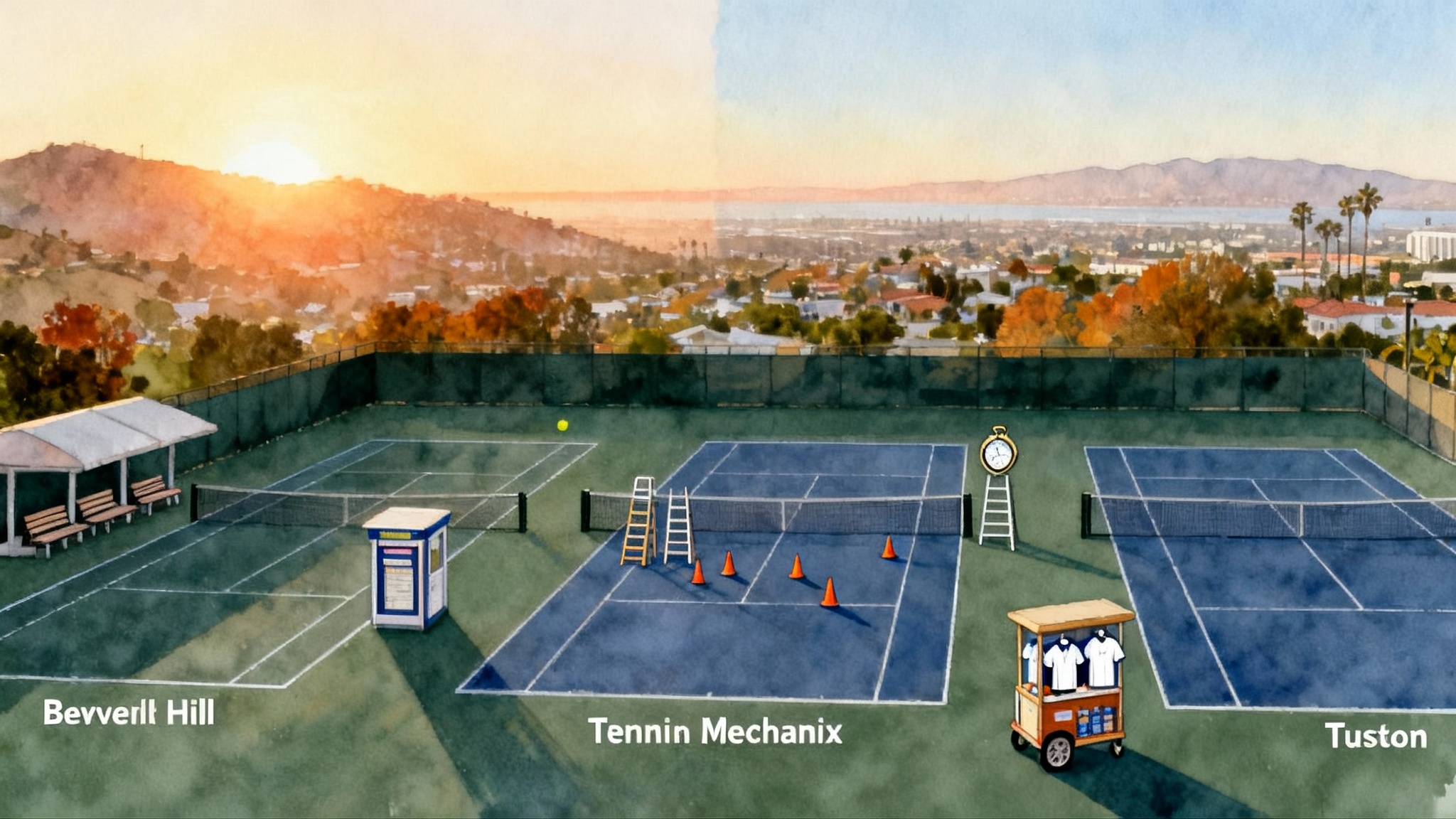
The short version: which academy fits which family?
Choosing a junior tennis home in Southern California is like choosing a school district with a sports science lab attached. The right choice depends on your child’s age, goals, and your calendar and commute. Here is a fast, parent-first orientation for 2025–2026:
- Beverly Hills Tennis (Los Angeles Westside): city-run programming with small group caps, predictable registration windows, clear session pricing, and a competitive track via the Junior Competition Program. Good fit for beginners through advancing intermediates who want reliable classes and an on-ramp to league and tournament play.
- Tennis Mechanix (Burbank, Los Angeles County): high-performance environment with long training blocks that integrate mental skills and athletic development. Best for tournament-minded players ready for multi-hour clinics and a tougher practice culture.
- Tustin Tennis Academy (Orange County): membership model with set weekly class counts, integrated private lesson time at higher levels, and transparent monthly rates. Strong option for families who want structure, make-up flexibility, and steady progression without going full boarding-academy intensity.
Below we go deep on the seven things parents ask about most: coaching pedigree, training structure, court access, match-play volume, pricing transparency, college-pathway support, and daily logistics. We finish with decision checklists and copyable weekly plans for Under 10, Under 14, and Under 18 players.
How we evaluated these day academies
- Coaching pedigree: Who leads the training and what competitive or development background do they bring?
- Training structure: How many hours, how often, and what is the blend of technical, tactical, physical, and mental work?
- Court access: How easy is it to get on courts for extra hitting or practice matches, and what are the rules and costs?
- Match-play volume: How many live-ball points, ladders, leagues, or tournaments are built into the program?
- Pricing transparency: Are prices, levels, and policies posted, with clear expectations around missed classes and refunds?
- College-pathway support: Does the academy help set a competition calendar, build video, and navigate recruiting timelines?
- Daily logistics: Commute, parking, weather plan, sign-up deadlines, and how well all of this fits school and family rhythms.
Beverly Hills Tennis (Los Angeles): city structure, small caps, and a league pathway
Coaching pedigree and environment
Beverly Hills Tennis is the contracted operator at La Cienega Tennis Center and Roxbury Park courts. It runs like a well-organized city program: small class caps, seasonal registrations, and straightforward policies that make planning easier for busy families. Junior group sizes are typically capped at six students per court, with live ball capped at eight, which keeps feedback loops tight for younger players and developing intermediates. As of October 2025, junior session prices and policies are listed publicly by season for residents and nonresidents.
Training structure
Expect one-hour junior classes in seasonal blocks, plus optional camps. For competitors, the Junior Competition Program runs practices in two-hour windows and uses ladders and a local league to add match reps. That structure lets a player start in fundamentals and step into competition when ready, without jumping into full-week high performance loads.
Court access
Families can reserve public courts through the City of Beverly Hills system. As of October 2025, court reservations require a tennis card membership, with posted hourly rates and a half-rate when all players are juniors. For families who like to add extra hitting outside class, this policy makes it easy to plan weekly practice slots. Review the city reservation requirements and rates via the Beverly Hills reservation details.
Match-play volume
The Junior Competition Program schedules practices on weekdays and matches on Sundays, with level definitions that progress from Novice to Open and references to local league and USTA tournament play. If your child needs more point play, ask to join the challenge ladder and the league rotation.
Pricing transparency
Session pricing is posted by season, with resident and nonresident rates. Policies for missed classes and rain are typically set at registration. This visibility makes it easier to compare true monthly costs to membership-based academies.
College-pathway support
Beverly Hills Tennis focuses on development and local competition rather than a formal college-placement pipeline. Families with varsity or collegiate goals often add one private session per week for video and match strategy, and then build a USTA or UTR schedule around Sunday match play.
Daily logistics
La Cienega Tennis Center sits just east of Beverly Hills, with structured check-in and predictable parking. Plan to arrive 15 minutes early during weekday rush hour. The city’s registration system handles most logistics, which is a plus if you prefer fixed sign-ups and posted calendars.
Best for
- Beginners to mid-level competitors who benefit from small-group instruction and clear seasonal calendars
- Families who want dependable pricing and the option to reserve extra courts at junior half rates
Tennis Mechanix (Burbank): high-performance blocks and integrated mental training
Coaching pedigree and environment
Tennis Mechanix was co-founded by former NCAA singles champion Cecil Mamiit and long-time trainer Joel Dacay. The academy emphasizes a full performance stack: technique, tactics, athletic development, and mental performance. That is reflected in longer clinic windows and a culture built around tournament preparation.
Training structure
For older tournament players, Elite and High Performance groups run in multi-hour blocks. As of August 2025, Elite typically meets Monday, Wednesday, and Friday evenings, while High Performance meets Tuesday and Thursday evenings with an added Saturday option. Younger Futures tracks run two to three hours depending on level. Per-clinic pricing is published so you can model monthly totals based on attendance.
Court access
Training occurs at Burbank Tennis Center and, for some groups, at Burbank High School courts. If your player wants extra practice, you will likely book courts through the tennis center for non-academy hours and coordinate weekend match play around the academy load.
Match-play volume
Point play is built into long clinics, and the training cadence assumes regular tournament entries through USTA or UTR. Parents should expect to schedule two to four competitive weekends per month during peak phases rather than rely on an internal league.
Pricing transparency
Programs list clear per-clinic rates by group. As of August 2025, sibling discounts are not typically offered, and discounts are usually limited to summer camp. If you plan three or four clinics per week, build a simple spreadsheet to compare month-to-month costs with membership models.
College-pathway support
Tennis Mechanix highlights athletes who have progressed to collegiate teams. The environment supports building a recruiting portfolio, but you will still want a parent-coach planning session each semester to align events with NCAA recruiting windows and academic testing.
Daily logistics
Expect peak-hour traffic on Interstate 5 and surface streets. The split-site setup means checking the weekly schedule and allowing buffer time when Elite is at Burbank High School and other groups are at the tennis center. The upside is abundant nearby courts for practice sets if you extend the trip with extra hitting.
Best for
- UTR-tracked competitors who thrive in longer sessions with integrated fitness and mental training
- Families comfortable planning tournament weekends and managing variable per-clinic costs
Tustin Tennis Academy (Orange County): membership structure with built-in privates
Coaching pedigree and environment
Tustin Tennis Academy has operated as a year-round junior program since the 1990s with an explicit focus on character and mechanics. The tone is structured but supportive, with clear level definitions and a steady weekly rhythm that suits school schedules.
Training structure
Levels I through IV define class length and weekly frequency. Starting at Level III, memberships typically include one 45-minute private lesson per month and written training plan updates, which is valuable for keeping parents in the loop without having to tack on separate packages. The public schedule shows weekday afternoon and Saturday blocks so you can build a consistent routine.
Court access
Programming runs at local public facilities in Tustin, with an on-site stringing service. For extra practice, families often supplement with city-run group lessons or daytime court rentals around practices. Expect straightforward parking and a shorter drive loop if you live in central or north Orange County.
Match-play volume
Group clinics include live-ball and point play. For sustained competitive growth, add weekend tournaments or club ladders. The academy’s structure makes it easy to carry a two- or three-day training cadence and then slot in one tournament weekend per month.
Pricing transparency
Monthly membership prices are posted for each level. As of October 2025, Level II (ages 7 to 11) commonly lists two classes per week for 1.5 hours each at a clear monthly rate, with three-day options available. Higher levels include a monthly private lesson. Review current tiers and policies via the Tustin membership pricing by level.
College-pathway support
Tustin’s built-in private lesson time and training-plan updates make it easier to build a tournament schedule and, later, a recruiting video and activity summary. If your player trends toward varsity or college tennis, ask for a semester plan that marries training blocks with an event ladder.
Daily logistics
Traffic is more manageable than the Los Angeles core. The membership model simplifies billing, and the uniform requirement reduces friction on practice days. If you miss a session, a posted make-up policy helps you maintain training volume without losing value.
Best for
- Families who want predictable scheduling and budgeting
- Players who benefit from steady structure plus monthly one-to-one touch points
Side-by-side takeaways across the seven factors
- Coaching pedigree: Tennis Mechanix brings a former NCAA champion and tour experience to the court. Beverly Hills Tennis offers a deep bench of city-contracted coaches with tight class caps. Tustin provides a long-running, values-forward program that communicates clearly with parents.
- Training structure: Beverly Hills is session-based and modular, Tustin is membership-based with embedded privates at higher levels, and Tennis Mechanix is per-clinic high performance with long blocks. Choose the one that matches your child’s school load and recovery needs.
- Court access: Beverly Hills provides a clear pathway to reserve public courts with junior half-rate court fees. Tennis Mechanix leverages center and high school facilities with plenty of nearby courts for add-on hitting. Tustin runs out of city facilities with simple park access.
- Match-play volume: Beverly Hills adds Sunday matches and a ladder. Tennis Mechanix assumes tournament scheduling. Tustin builds points into clinics and leaves tournaments to family planning.
- Pricing transparency: All three publish prices online. Beverly Hills posts per-session rates with resident discounts, Tennis Mechanix lists per-clinic fees by group, and Tustin posts monthly membership tiers with make-up policies.
- College-pathway support: Tennis Mechanix signals collegiate outcomes; Tustin’s private-lesson inclusion helps build those assets; Beverly Hills may require booking extra privates for the same outcome.
- Daily logistics: Shortest commute wins more often than not. Westside families benefit from Beverly Hills. Valley families will find Burbank more convenient. Central and northern Orange County families will value Tustin’s membership rhythm.
Decision checklists for parents
Under 10 checklist
- Does the program use small groups and colored-ball progressions? Beverly Hills caps classes at six and has a structured path to competition. Tustin’s Level I and Level II define hours per week. Tennis Mechanix Futures offers two to three hour blocks focused on foundations.
- Can you lock in a regular after-school slot and still make bedtime? Tustin’s membership schedule helps. Beverly Hills has fixed seasonal days. Tennis Mechanix blocks run longer, so plan homework windows accordingly.
- Is there an easy on-ramp to competition? Beverly Hills adds Sundays when ready. Tennis Mechanix can fast-track to orange-ball and green-ball events. Tustin clinics include point play, with tournaments added as interest grows.
Under 14 checklist
- How many weekly hours are realistic during the school term? Tennis Mechanix’s four-hour evenings demand planning. Tustin offers two- or three-day options with a built-in private at Level III. Beverly Hills can mix group classes with Sunday match play.
- Who will guide tournament selection? High-performance programs often map a monthly schedule. At Beverly Hills or Tustin, ask for a quarterly planning call to stitch together USTA or UTR events.
- Can your player get extra court time? Beverly Hills families can reserve junior half-rate courts through the city. Valley and Orange County families often find weekday park courts near their academies.
Under 18 checklist
- Does your player need recruiting assets this year? Ask for match video, a skills reel, and coach notes each month. Tennis Mechanix highlights collegiate outcomes; Tustin’s private-lesson inclusion helps build those assets; Beverly Hills may require booking extra privates for the same outcome.
- Is the load sustainable with honors classes and exams? Tennis Mechanix’s long blocks train resilience but need recovery days. Tustin’s three-day option balances volume and academics. Beverly Hills plus a weekly match-play day offers structure with flexibility.
- Can you keep the calendar predictable? If yes, Tustin’s membership rhythm shines. If you prefer to ramp up in season only, Beverly Hills sessions are straightforward. If your player is chasing sectional points, Tennis Mechanix’s cadence fits.
Sample weekly plans you can copy
These are model weeks during a typical school term. Adjust for test weeks and tournaments.
Under 10
- Beverly Hills Tennis: Two one-hour group classes on Tuesday and Thursday. Optional Sunday ladder once ready. Add one 60-minute reserved court for family hitting on Saturday morning.
- Tennis Mechanix: Two Futures clinics of two to three hours each. Finish each session with 20 minutes of serve practice at home to reinforce mechanics.
- Tustin Tennis Academy: Level II membership, two 90-minute classes midweek. One easy park hit on Saturday and a monthly orange-ball event when interest spikes.
Under 14
- Beverly Hills Tennis: One group class midweek plus one afternoon of match-play practice, then Sunday matches twice per month. Reserve one extra court on a light homework day for serve and return reps.
- Tennis Mechanix: Two High Performance clinics on Tuesday and Thursday, optional Saturday block. Every third week, skip the Saturday block and play a USTA tournament to convert training into pressure points.
- Tustin Tennis Academy: Level III three-day membership with the monthly 45-minute private, used for serve video analysis and footwork progress checks.
Under 18
- Beverly Hills Tennis: Two afternoons per week of competition-focused practice in the fall. Add one private lesson for video and match planning. If varsity season overlaps, keep one day and switch the other to recovery and mobility.
- Tennis Mechanix: Elite on Monday, Wednesday, Friday. Use Wednesday night for point-play emphasis and Friday for competing up a court. Alternate tournament weekends and recovery weekends to manage school load.
- Tustin Tennis Academy: Level IV three days per week with the built-in monthly private. Schedule one tournament per month and one scrimmage set with a training partner on off weeks.
What it will cost per month in practice
- Beverly Hills Tennis: Session pricing varies by season and resident status. A common setup for younger players is two one-hour classes per week across an eight to fourteen week session. Families often add one paid court reservation for extra practice. Plan a monthly average rather than a fixed number because sessions and holidays can shift the calendar.
- Tennis Mechanix: Per-clinic pricing means your total scales with attendance. Many competitive players target two to three clinics per week in season. Build a simple monthly forecast based on the current clinic rate and your planned cadence.
- Tustin Tennis Academy: Membership tiers make budgeting straightforward. As of October 2025, two days per week at Level II is a clearly posted monthly rate, with Level III and IV three-day options that include a 45-minute private. Confirm details on the Tustin membership pricing by level.
Smart next steps for parents
- Verify the latest schedule before you enroll. Program calendars can shift with school terms and facility events.
- Ask about the coach-to-player ratio in your child’s exact class. Even within the same program, ratios vary by time slot.
- If college tennis is a goal, request a semester plan that includes targeted tournaments, a video plan, and a short list of schools that fit both academics and level.
- Use one extra weekly court hour for serve and return practice. These two skills change match outcomes fastest for most juniors.
- Track training load. If your player’s sleep dips or grades slide, trim one weekly session for a month and reevaluate.
The bottom line
There is no single best academy, only the best fit for your child’s age, goals, and your family’s reality. Beverly Hills Tennis gives you city-backed structure and a clean step into competition. Tennis Mechanix gives you long, performance-focused clinics that suit tournament-driven juniors. Tustin Tennis Academy gives you membership clarity and built-in one-to-one touch points. Choose the rhythm your family can sustain, then commit to it for a semester and measure progress in hours trained, points played, and smiles on the ride home.
